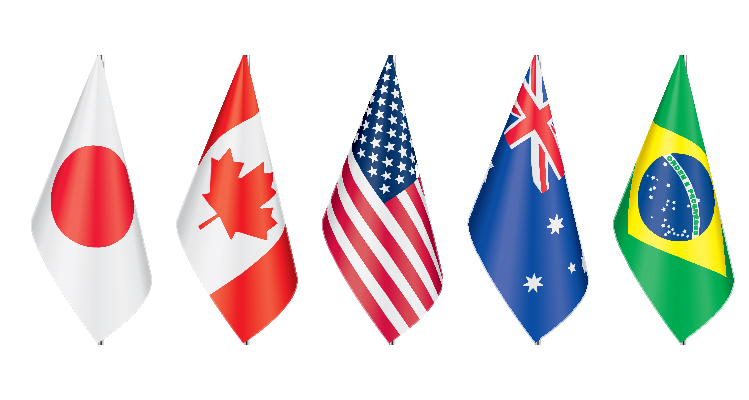Medical Device Single Audit Program: Compliance and Opportunity

Ten years after preparations began for a globally harmonized approach to auditing and monitoring the manufacture of medical devices, the Medical Device Single Audit Program (MDSAP) is now active in five countries: Canada, Australia, Brazil, the United States and Japan. Designed to improve the safety and effectiveness of the industry as a whole, the unified audit program is guided by the principles of consistency and simplification to bring standardization to regulatory frameworks and technical requirements across different legislations, with a particular focus on medical device manufacturers’ quality management systems (QMS).
Responding to this major change in audit methodology will involve close collaboration between various internal and external stakeholders, and in many cases, consultancy organizations will be brought in to help navigate the compliance pathway, link up with experts and deliver the maximum commercial benefits from the process.
Audit Cycle
The MDSAP implementation cycle is staged as follows, typically over three years.
- Initial Audit. A documentation review forms the stage one audit, preceding stage two, which is an implementation review of the ISO 13485 standard and regulations applicable to each participating country. The goal is to review the QMS, checking that products are safe, effective and compliant with performance specifications.
- Surveillance Audit. A stage one audit is not necessary unless there have been significant changes since the last audit. The purpose of the surveillance audit is to ensure ongoing compliance of the audited QMS with the relevant standards and regulations.
- Recertification Audit. Again, a stage one audit is not mandatory. This phase will involve verifying that the QMS remains effective, continues to satisfy all applicable standards and conforms to every MDSAP-specific requirement.
Remediation Actions
Non-conformities (NCs) that are revealed during the audit will be graded on a scale of one to five, with five being the most critical. The Auditing Organization (AO) is responsible for informing regulatory authorities within five days if one or more grade five NCs is identified, two or more grade four, any public health threat or fraudulent activity. AOs are expected to provide the audit package, including NC grading, to the authority within 45 days of the audit end date, and the manufacturer is required to provide a remediation plan for each NC within 15 calendar days of the report being issued. Typically manufacturers can expect an unannounced visit from auditors six to nine months later to check that the remediation actions have been implemented effectively.
The Compliance Opportunity
A successful MDSAP process should deliver important advantages for manufacturers, for instance, enabling them to demonstrate their commitment to product quality, which could in itself become an area of competitive differentiation in marketing terms.
Compliance also brings them into line with local regulations as well as ISO 13485, and streamlines the overall volume of regulatory submissions. Moreover, since the MDSAP standardizes legislation across the five participating countries, manufacturers will automatically comply with each country’s local framework, broadening their market opportunities without any additional compliance obligations.
Participating Countries
The following is an overview of the benefits specific to each jurisdiction that will be relevant for manufacturers selling their products under MDSAP:
- Canada: From January 1, 2019, the Class II, III and IV medical devices in Canada will follow MDSAP. The CMDCAS will be transferred to the MDSAP. In contrast to the other partners of the program where participation is voluntary, the MDSAP will be mandatory for the regulatory submission in Canada.
- Australia: Combination products and other medical devices are accepted by the MDSAP. The Therapeutic Goods Administration can accept MDSAP certificates as support of evidence for compliance with the ISO 13485 standard and may request additional documents.
- Brazil: The resolution from August 2015 allows MDSAP reports as an alternative to an ANVISA inspection, only when the previous ANVISA inspection was deemed satisfactory.
- USA: The MDSAP can be an alternative to a FDA inspection, excluding combination products and PMA inspections. Certification documents issued by the AO must comply with applicable U.S. regulations.
- Japan: An MDSAP audit report submitted at the time of pre- or post-market QMS inspection can be used as a trial to exempt some manufacturing sites from on-site inspection, and/or to allow the Manufacturer’s Marketing Authorization Holder (MAH) to substitute the MDSAP report for a considerable part of documents required for the inspection.
Summary
It is understandable that the new compliance procedure could be perceived as burdensome by some stakeholders. Manufacturers will have to train their internal auditors, for instance, and temporarily allocate resources to manage the transition. But in the long run, the single audit program will reduce the time and resources required for audits and inspections as well as facilitating international trading. The overarching goals of transparency and standardization are certainly positive for the medical device industry as a whole.